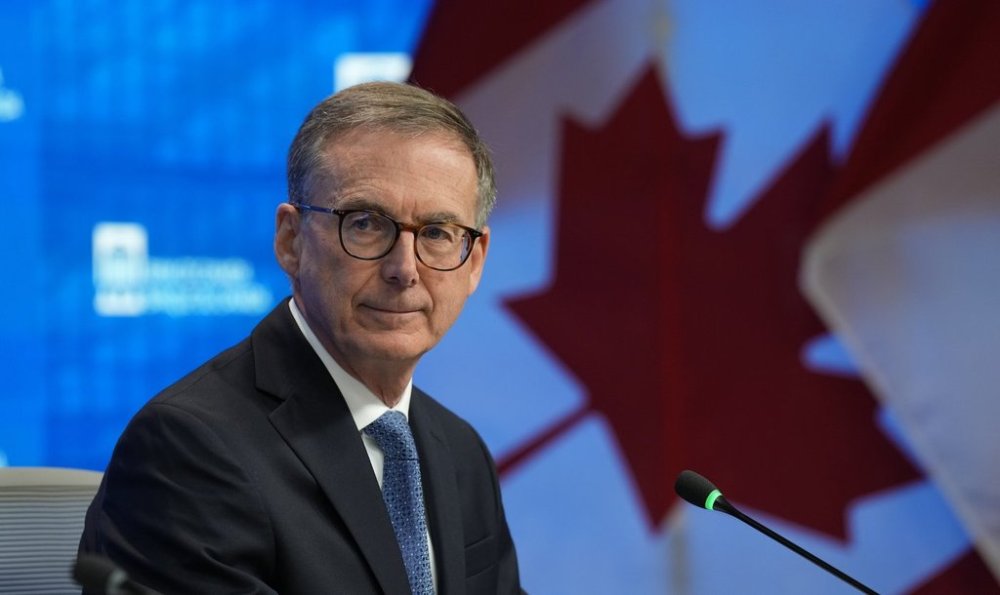Bank of Canada will be ‘humble’ as it returns to economic forecasts: Macklem
Advertisement
Read this article for free:
or
Already have an account? Log in here »
To continue reading, please subscribe:
Monthly Digital Subscription
$1 per week for 24 weeks*
- Enjoy unlimited reading on winnipegfreepress.com
- Read the E-Edition, our digital replica newspaper
- Access News Break, our award-winning app
- Play interactive puzzles
*Billed as $4.00 plus GST every four weeks. After 24 weeks, price increases to the regular rate of $19.00 plus GST every four weeks. Offer available to new and qualified returning subscribers only. Cancel any time.
Monthly Digital Subscription
$4.75/week*
- Enjoy unlimited reading on winnipegfreepress.com
- Read the E-Edition, our digital replica newspaper
- Access News Break, our award-winning app
- Play interactive puzzles
*Billed as $19 plus GST every four weeks. Cancel any time.
To continue reading, please subscribe:
Add Free Press access to your Brandon Sun subscription for only an additional
$1 for the first 4 weeks*
*Your next subscription payment will increase by $1.00 and you will be charged $16.99 plus GST for four weeks. After four weeks, your payment will increase to $23.99 plus GST every four weeks.
Read unlimited articles for free today:
or
Already have an account? Log in here »
Governor Tiff Macklem says the Bank of Canada will have to be “humble” in its return to formal economic forecasting as trade uncertainty continues to swirl.
The central bank intends to publish a forecast for the economy at its upcoming interest rate decision on Oct. 29 — something it hasn’t done since the start of this year as U.S. tariffs clouded the economic horizon.
Macklem is in Washington, D.C., this week for the International Monetary Fund’s annual meetings with the heads of other central banks and financial policy-makers.

He told reporters on a call from the sidelines of those meetings that uncertainty around the U.S. tariff campaign has decreased since the spring.
“Uncertainty about the stability and trajectory of the global economy is still high, but we have avoided the worst-case scenarios,” Macklem said, citing the IMF’s updated World Economic Outlook.
But threats to global trade persist. Macklem said a potential escalation between China and the United States, if it came to pass, “would be very significant from a global perspective.”
At home, Macklem said the uncertainty has now shifted to next year’s review of the Canada-U.S.-Mexico Agreement on trade, which currently allows the bulk of Canadian goods to enter the United States tariff-free.
With those risks outstanding, Macklem said the Bank of Canada “will need to be humble about our forecasts, and we will continue to put a lot of emphasis on the risks.”
The Bank of Canada will get a look at two fresh sets of data next week — its own quarterly surveys of businesses and consumer expectations and Statistics Canada’s report on September inflation.
To this point, Macklem said businesses are telling the central bank in surveys that the ongoing uncertainty has been holding them back from investments and hiring.
But he said the artificial intelligence boom has been a “countervailing force” to boost investment in the face of uncertainty, particularly in the United States.
“AI has the potential to be an important tailwind, increasing productivity and sustaining non-inflationary growth,” Macklem said”
“But it also poses risks and we all agreed we need to better understand the complex macroeconomic impacts of AI, including the labour market implications.”
The Canadian jobs market surprised many economists earlier this month when StatCan reported a gain of 60,000 positions in September.
Commenting on the jobs report, Macklem noted that the economy shed more than 100,000 positions over July and August, and any one “monthly number is not definitive.”
“What you see over a number of months is … a labour market that has softened,” he said.
The Bank of Canada cited weakness in the jobs market as one of the key factors fuelling its quarter-point interest rate cut last month.
But Macklem was tight-lipped as usual on where the central bank was leaning for its rate decision at the end of the month.
He said monetary policy-makers will be looking at how tariffs and uncertainty are spilling over into Canadian export volumes and investment levels, as well as the overall inflation outlook, in guiding its upcoming decision.
Macklem also suggested the central bank would be paying close attention consumption levels, which he said “has been showing some resilience” lately, in charting the path for interest rates.
“Let’s get all the data, let’s look at the forecast, let’s have the deliberations and we’ll come to our best assessment and a decision on Oct. 29,” Macklem said.
This report by The Canadian Press was first published Oct. 17, 2025.

